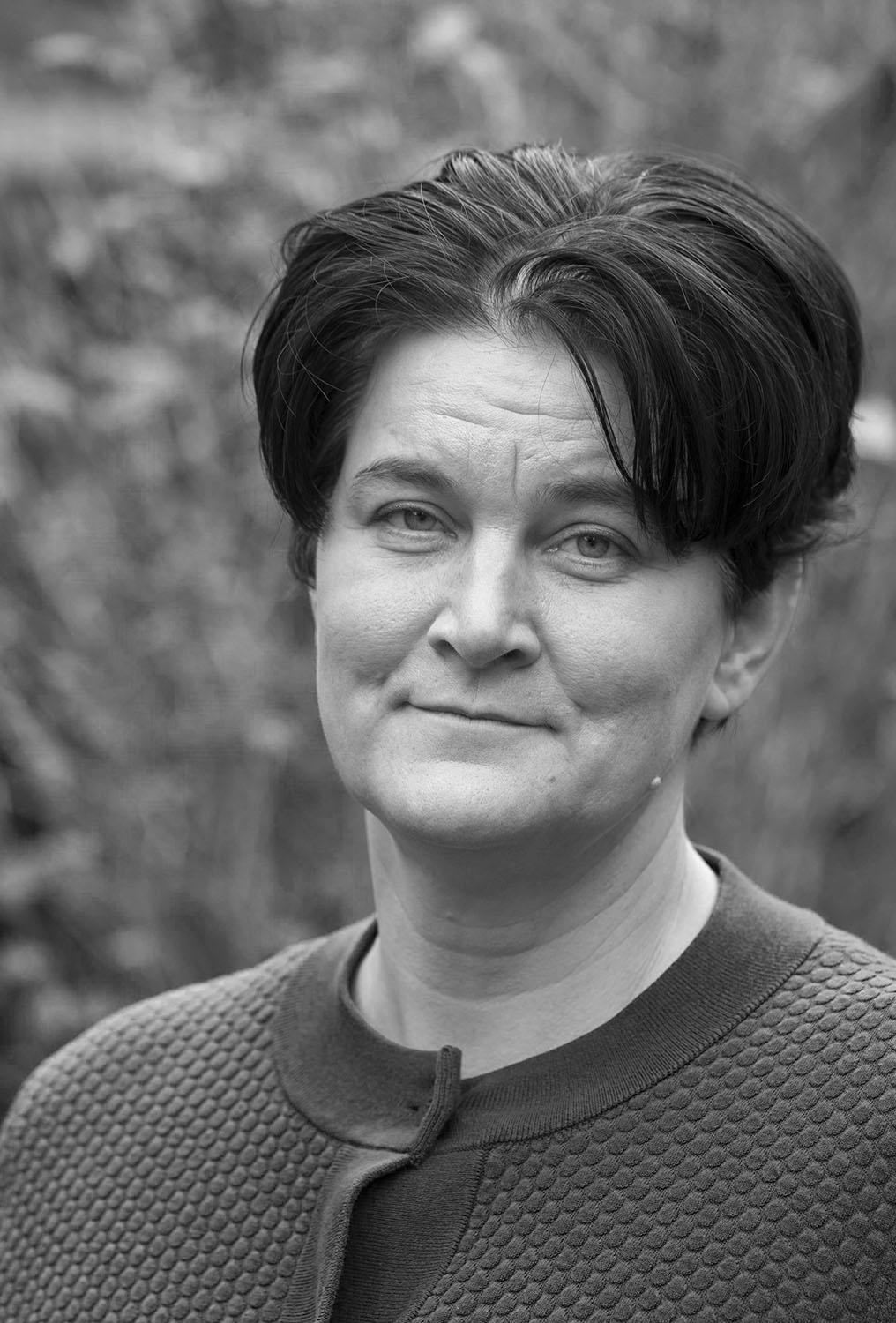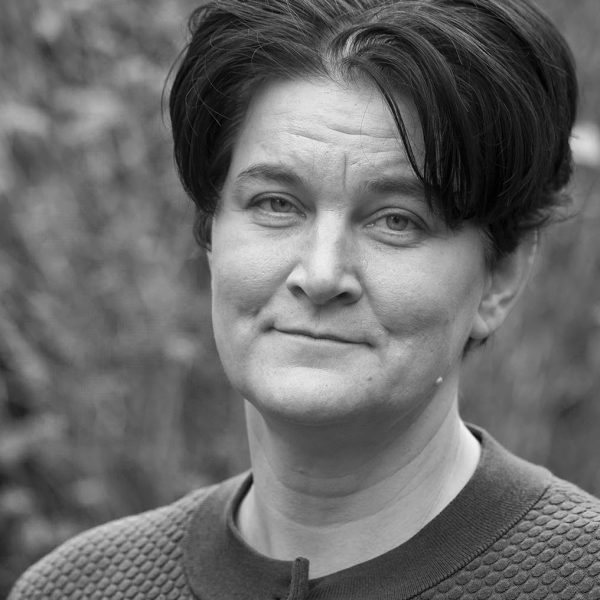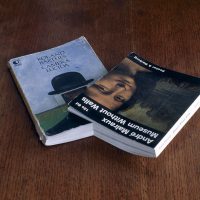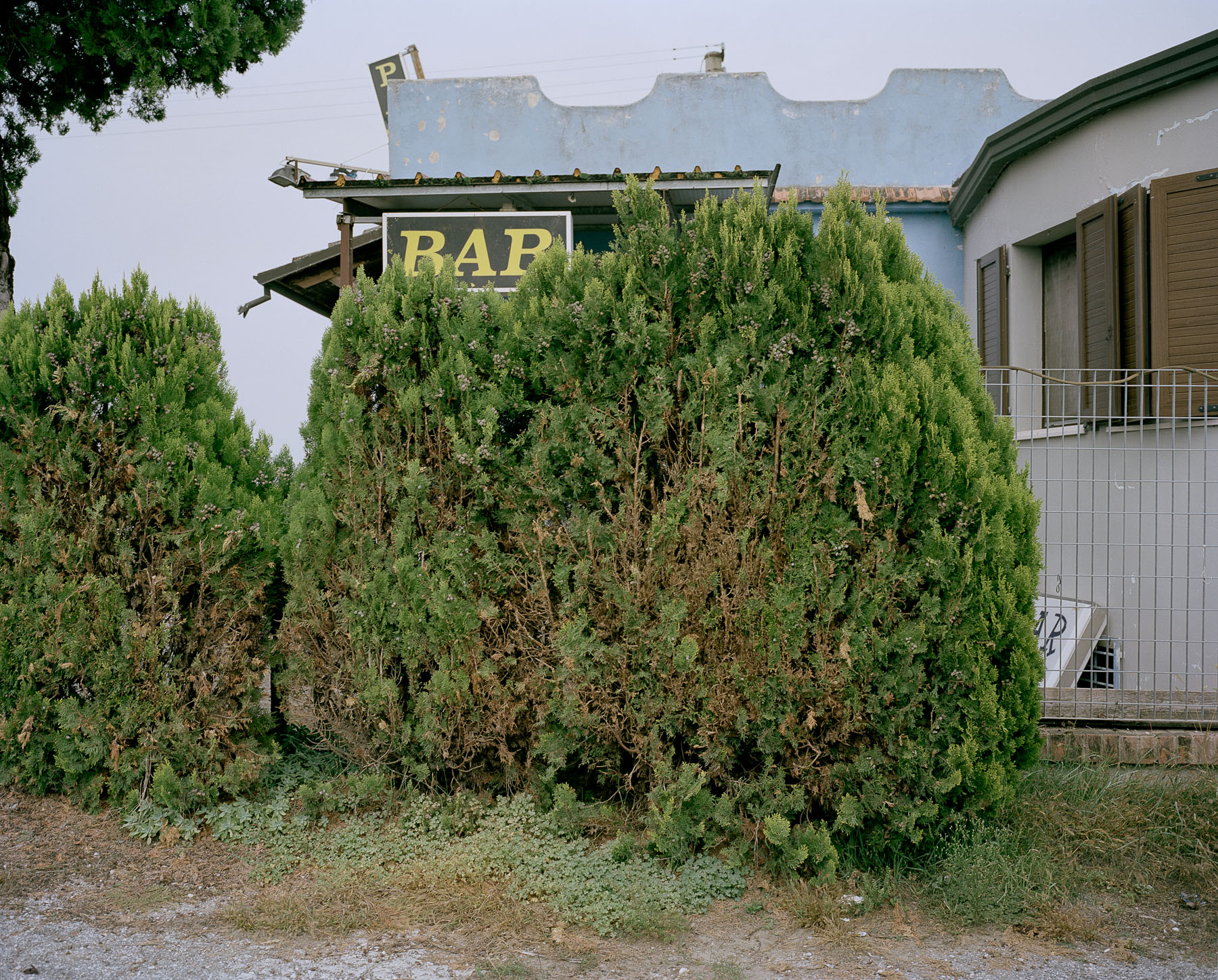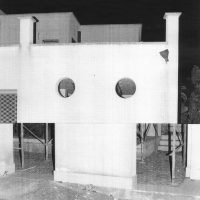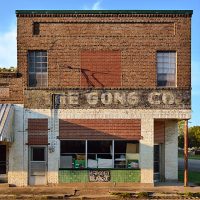Iris Sikking was an absolute delight to speak with. I had the good fortune to meet with her during her curatorial guesting of Photomonth Krakow (2018).
*****Please consider supporting this episode by making a donation*****
Episode 17: Iris Sikking was an absolute delight to speak with. I had the good fortune to meet with her during her curatorial guesting of Photomonth Krakow (2018).
Her curatorial project Space of Flows was exhibited in multiple venues across the city of Krakow and drew from the Spanish sociologist Manuel Castells concept of open network societies . Castells in his book The Rise of Network Society (1996) considered how the notion of open and borderless networks would become the wave of the near future. Published in 1996 and on the cusp of true internet connectivity, Castells can be seen as something of a prodigious thinker in terms to how we live today.
Iris in her curatorial role decided to look back and use Castells work as a way to interpret his ideas in the present and to see how his theories had developed in art and society at large. The exhibition in Krakow hosted a number of brilliant minds working in different subsets of the photographic medium with a prominent dialogue regarding documentary practice.
Since that exhibition, Iris and I have stayed in touch and I was very fortunate to interview her for American Suburb X with Anna-Kaisa Rastenberger for their book entitled Why Exhibit? Positions on Exhibiting Photographies (2018, FW: Books). The book is one of the very few to address the idea of how we curate photography in its multitude and is considered in my mind to be the first medium-specific book of importance on the matter. There have been a few since, but overall this is the book that should be added to curriculums.
What strikes me as interesting about Iris is not only her dedication to curation, but also her broader approach to how the mediums of both film and photography can be challenged and how we can shape often complex narratives from the material that we wish to publish or exhibit. It is my contention that Iris has presented numerous questions about how we consider our roles within photography and its exhibition format. Her background in editing and film has most certainly been key in forming this position.
In summary, the episode presented here offers much food for thought on a variety of topics and is refreshing in its delivery. We speak a bit about academia and how the concepts of how exhibitions and dialogues surrounding photography must be put into a context that reaches a more broad audience. We speak about effective ways to nurture that possibility, without disregard for the complex material that we are speaking about. This will be of use to artists and young curators and it is my hope that see many more volumes come from Iris & C0.
This interview is from the original American Suburb X Post…
BF: I have very much enjoyed your book published by FW: Books. I think this is a much needed conversation for photography people to be having for many layered reasons, not least of which is centered not only around the basic question of Why exhibit?, but also where and how, given the age we live in and what it means to at its base, exhibit photography. I hold the publisher in high regards for publishing it along with your own efforts.
We have to look closely at what it means in the day and age of social media, in particular Instagram, Flickr, Tumblr etc and also about how and why we distribute images in physical form. Many further questions pervade about how and who should be doing the exhibiting and how we assess and define what our position is to the historic role i.e. colonial photography, race and the disproportionate history of white men governing over curatorial roles. Your book covers much of this ground, but also speaks about the practice of curation and exhibiting and why public versus commercial and private space are at the crux of the conversation. I want to ask some general questions about how the project came into being and also how you perceive your own practice in general terms. Could you each give us some background as it relates to your involvement with photography?

Nicolas Grospierre, from the series The Picture Which Grows, 2011. Commissioned by Archaeology of Photography Foundation. Image courtesy of the artist.
AKR: The questions regarding the acts of displaying and thereby contextualizing different practices of photography and ways of representations have occupied my mind for quite a while. I suppose it’s related to my background as a curator and researcher who approaches photographs often with kind of amazement: How do they represent? How do they function? What do they do to us? It’s this old Foucaltian question How? Instead of What? Which has been in the center of my mostly sociological-based research on photography. Another reason for this book is that in my opinion among the institutions and festivals that display photographs there is too little debate on both the varied roles of curatorial work and photographs and curators; a debate on the theorisation and research on curating and on the practises of exhibiting which among contemporary art has been ongoing for several decades.
BF:I think often that stems from photographic education as in many of the academic institutions the practical theoretic value of display is not high on the curriculum or if it is, it is not in the photographic departments…
AKR:…Also, what I’m really looking for is more discussion about the ethical choices we deal with when we display photographs and make exhibitions. Are they connected to questions about who is displaying them and how are genders, ethnicities and ages distributed? Are they connected to a precarious labor condition widely seen in the contemporary photography field? Or are there questions dealing with conditions and contexts of gazes and representations? How are certain spectatorships created, affirmed or challenged? This is something I would really like to work on the next volume, haha… Seriously, as you mentioned about the conventions of constructing the history of photography and displaying photos, the leading role of white men defining the standards of so-called quality … as Jonathan Beller – among others – writes that there is no history, nor present of representations without taking account the historical and contemporary conditions in which racism and discrimination are embedded. Photography is a racial and gendered formation, writes Beller, ”its usage, form, and technical development went along a kind of simultaneous and mutually imbricated trajectory that was fully embedded in racial and racializing social practices.“[1] Social media has amplified these dialogues between representations, technology and acts of looking, which in my opinion have made the ethical discussions about displays of photographic representations even more urgent. And exhibitions as social spaces and ‘framing and focusing’ platforms would be perfect places for it.
In summer 2017, I met with Iris in Arles and we talked about these things over a cup of coffee. We both shared the interest and enthusiasm on these topics and then I asked if she would like to work on the book with me. That’s how it started and we decided to do it with a full speed. I must add that I am very very grateful to all the writers and those interviewed who agreed in contributing to our book. It was really a pleasure to work with them.

SITUATION #128, Lauren McCarthy, Follower, 2016–ongoing. Installation view at Fotomuseum Winterthur, 2018 © Philipp Ottendörfer
IS: In the early nineties I was trained as film editor and experienced the digitization of the profession that had a strong impact on the filmmaking process. Of particular importance for me was the idea on the pace of the editing process. For many years I enjoyed editing documentaries and essay films while building up an argument visually. Following this I became part of the first batch of students at the Master Photographic Studies (Leiden University),which had a small course called Photography & Curation which felt like a good context for me, however soon enough it left me a bit disappointed.
In comparison to film, where a whole instrumentation is at ones disposal to gain and keep a viewer’s attention and involve him or her into an emotional state and consequently within the story, photography and how it is exhibited formed a pretty stark contrast. This is the main reason I built my curatorial practice on experimenting with new ways of presenting photography that are more related to video/film art practices. I always question how the narrative, which not only refers to the storyline, could be outlined and made accessible in a spatial translation of the work is implicit. The projects and exhibitions that I undertook in the past always consisted of elements of the moving image, graphic layers, soundscapes and other means to visualize and make clear the argument of a work and the artist’s intention.
The idea for the publication Why Exhibit? grew out of a deeply felt and shared frustration that Anna-Kaisa and I held because we both experienced an incomprehension or even an absence in theoretical discourse on how photography is presented, made public either in a white cube, a city space, a book or on the web, or our mobile devices in the age of a virtual reality and how it is then interpreted. Reflecting back on my career in film, in which a theoretical discourse is quite present e.g. the relation between filmmaker and subject, and how an image is placed in the context of other images once it becomes part of a sequence, I was and am surprised of this lack of theoretical and reflective debate amongst curators and photographers. My main interest lies in creating exhibitions and large-scale events, therefore I dedicated my article to my curation for the Krakow Photomonth. I was looking for a way to analyze my own curatorial practice while incorporating the artistic positions of each individual work under the umbrella of one specific theme. At the festival we hosted a symposium to start the discourse on the many topics of our book and we hope to continue this debate in the future.

Robert Knoth and Antoinette de Jong, Poppy: Trails of Afghan Heroin, 2012. Installed in Tytonie, Krakow Photomonth 2016 (photo: Studio Luma)
BF: One particular set of questions in regards to the public exhibition space are something that Anna-Kaisa brought up in her essay “Why Exhibit: Affective Spectatorship and the Gaze From Somewhere”…you ascertain first that the idea of “public space” has become quarantined and conversely broadcast more loudly in a sense. Not only has the idea of public space been taken over by corporate sponsorship, thus creating an unspoken (in my mind) space for censorship, but also creates a schism in so much that it offers a form of virtual/real time art-tourism that is created for acts and rituals associated with social media and its distribution-i.e. the virtual space encourages a consumption of photogenic processes and materials in which the environment, corporatized or other is in effect. It is not public in the historical sense, but part of a shared ownership of neoliberalist and consumer technological space in which it produces a generic experience or image of the exhibition. I may have some of this wrong and the layered minutiae of governable dynamics seems vast. Can you tell us a bit about these public control spaces and how they effect the distribution and role of photography in Western culture from your perspective? Please do feel free to enlighten or correct my understanding….
AKR: I pretty much agree with you. The questions about ownership, capitalization and misuse of our “private” data and photos on social media has been very much discussed recently. As I write in my text, I think on the one hand the neoliberal economic and the privatization of public sphere, and on the other hand the digital technologies and social media have troubled the existence of public space in many cultures, not only in Western societies. We spend a lot of time in virtual spaces mediated by the screen, while we are both present and absent in our physical environment and social relations. The temporal and spatial fluidity induced by digital technology matches with the fluidity of public and private brought by social media. Galleries and art spaces create more and more photogenic art settings, installations and views in order to encourage audience to participate in the image circulation by sharing their photos of exhibitions on-line. On the one hand, this has led to massive exhibitions spectacles, which are meant to be experienced together with other spectators already as a collective photographing experience. If you think for example the exhibition by Yayoi Kusama, or Ernesto Neto, on social media platforms they lead to generic imagery, which can be seen as a continuation of historical tourist photography. On the other hand, spatial exhibitions are more and more created as views flattened to be photographed. For audience shooting and sharing can mean a way to build an exhibition experience, curating their own network identity and communicating with their own community and for art spaces photographing audience mean attention currency and best possible outsourced marketing staff.
BF: You also mention the role of the aggregator of archival imagery in which the authorship of exhibiting secondary material almost becomes a pursuit or an act itself that merits a change of role. I think this is an interesting side question about collecting or aggregating as a practice and what validation we can ascribe to projects in which secondary use becomes a practice-amalgamated or (in the bad sense) curated with their “need to photograph” for social spaces, virtual or other. I suggest that this notion has to do with a few things…
As you point out, network culture and social media almost demands the participation of an amalgamated experience through digital image trail to define existence at all, but also…
I could hypothesize that in the technological present, we are experiencing the information age, data sets etc. as a way in which we look for financial reward (sapio-capital) along with the reward of self-perception and “like economies”. Perhaps this is what the technological steps to the future present to people as the decline of the industrious job is prevalent and that photography by its very nature becomes the way that is quickest for us to process information from a stream of relatability…what are your thoughts on where the “exhibition” of photography will merge 100% with the fiscal return of its distribution for “common” users? And when will “exhibiting” function as an outcome of new economics in the technological future if you had to guess?
AKR: Maybe this is the point to get back to think and define the meaning of the word “exhibiting” in relation to photographs. How are we to confront the way photographs frame the way we see, and how they influence our reaction to representations and the conclusions we draw as viewers? What belongs to us? I think that for institutions, there is a responsibility (which doubles as an opportunity) to challenge the conditions and terms of engagement for diversity of spectators viewing images on line, too. At the same time, as Boris Groys writes, an exhibition “demonstrates the technology of presenting, the apparatus and structure of framing, and the mode in which our gaze is determined, oriented, and manipulated by this technology,”[2] all of which can also be said about photography. Art spaces participate to the constant movement of re-contextualization and de-contextualization of photographic images. I am not sure if this answered to your question…?

Natasha Caruana, Timely Tale, 2017. Installation view. Co-commissioned by HOUSE Biennale and Photoworks © Natasha Caruana
BF:You have in parts yes. I think I was a bit convoluted. My question was more of a mediation about the life of an exhibition and the idea of “influencer culture” as it pertained to using images from an exhibition as part of the content generated by a person for potential economic use via social media etc. For example, using Yayoi Kusama or that horrible Anish Kapoor piece in Chicago, one is using the status of an art object to economize to identify social precepts of cultural value and intellect/ability to view the object-the social media credit of staging a piece on a personal influencer account to generate traffic etc. could be seen in the future as a portal to economic activity via art tourism. I’ve gone a bit Chinese credit system on that, but your questions of public/private space and image consumer relationships-how art functions on secondary levels in a new economy is a looming topic.
I want to ask one question that I think lies slightly outside of the book’s overall concept, but is incredibly integral to the idea of exhibiting. I wish not to digress against your work by any means and I do see some slight fielding of the topic, but in short, I would like to know why there isn’t more coverage on the market-side of the desire to exhibit? Now, this is not say that you did not mention it and that perhaps this in its essence is more of an academic tract, but perhaps we could speak on why the strategies, the forces of the market that pressurize a desire to perform an exhibition never seem to collude with the intellectual side of the platform? Why are there so few instances in which these two fields of market and intellectual concept or academic/institutional “purity” never become embedded in the same discussion? If we disregard the faux-hatred of the commercial world for a moment and discuss what in reality artists want to do is be artists, but also refuse to talk about the economy of these matters and also propose perhaps to the market side that the intellectual/academic pursuits are too heady or perhaps characterized by a need to remain “pure” from the discussion of economic exchange…Why is it that we cannot merge the two realities in a larger discussion? It is clear that from the intellectual viewpoint, that the shaping of work by the market is a constraint and yet all grants awards and gallery cheques are facilitated in some way by the governance of capital whether its BP at the Tate or Frieze art tourism and expenditure.
AKR: In my opinion we’ve been discussing for decades about how the exhibiting certain or someone’s works in exhibition spaces with certain status (museums + established gallery etc.) or being shortlisted to certain awards reflect directly or indirectly the monetary value of the artist’s works, in a spirit of kind of Bourdieusian cultural capital. The whole system of artists’ ranking lists is based on attention economy, which goes often hand in hand with the monetary value of the works. But yes, you are right, those topics are not very present in our book, even if they definitely should be discussed more openly.
Also, what in my opinion needs to be discussed on the contemporary photographic art field is the precarious and non-sustainable work, which is so elementary and unbearable part of displaying photographs, unfortunately. If the big number of photography festivals and event machines related to photography work only on the basis of already mentioned Bourdieusian cultural capital and the attention economy taking for granted that young photographers, unpaid or poorly paid interns, and volunteers will continue to be eager to barter economic and professional self-respect for CV “experience,” then the institutional structures and infrastructures of exhibiting photos should be radically reassessed. Exhibiting photographs should not be an excuse for events that increase labor, which is unfair, precarious and non-sustainable. Equitable continuity requires that we re-engineer the machinery of exhibiting so that in addition to discovering and introducing to audiences new photographers, a commitment to long-term support, guidance, and collaboration between curators and, especially, young photographers is a central component of curating and exhibiting. This labor means kindness and caring for others: photographers, gallerists, coordinators, volunteers, interns and others working to create the exhibition.
BF: Moving towards another proposition to you both. I have noticed that in the book a few of the essays relate to the archive. It’s always strange to say “the” archive as it sounds like a layer of bedrock that runs deep under our feet but connects the vast spinning globe together. A few of the essays use words like “excavating” and “archaeology” in examining issues that surround the archive, its making, its interpretations, but also its useful or other status.

Why Exhibit? Positions on Exhibiting Photographies, eds. Anna-Kaisa Rastenberger and Iris Sikking (Fw:Books, 2018)
How is it that we have come to employ these terms of a scientific structural value to the “photographic record” and its re-purposing for exhibition? The correlation, and I have used it myself often, is always a bit obtuse and imagined. I think we borrow largely from a scientific field, or rather we wish to incorporate a scientific methodology when we regard the “archival impulse” and yet with authorship being a principal point of view in both positive and negative terminology- both in terms of the author/collector of the material and the author/examiner of its contextual mass, that we assume that a discourse is possible in scientific terms, which…anything aesthetic/subjective in nature defies to some degree by its interpretive position and remains subject to change.
Iris, your work in particular has examined potential spaces as archives in themselves, such as cityscapes and the history or cultural speculation in which they physically exist-the use of the city such as Krakow as an archival landscape in itself, for example. Perhaps that is my interpretation of the Krakow site, but I felt that it was an endeavor very specific to that city and its history was inescapable.
How do you see archival work progressing? Do you see it as a wider remit than the accustomed objects or documents in dusty boxes in the basement of the museum to be re-arranged on a wall?
IS: Did I use Krakow as an ‘archival cityscape’? Well I guess I did, but not consciously I must admit. However it is truth I tried to be open and sensitive to underlying stories of a place, historical shifts and the way people use a city. While spending time in Krakow one can’t get around the burden of its history. These histories shape the city as it is today. Furthermore, in some of the projects archival material was used indeed. And I am aware of the way we discuss it in photography, probably not with the right terms, however we need to rely on a mutual language to be able at least to communicate. Kim Knoppers describes in her article how she excavates archives long forgotten and stuffed away. She attempts to create new storylines, and uses her imagination over a more scientific attempt to map these archives. This is even more the case within the projects initiated by the Foundation for Archeology in Warsaw and described by its curator Karolina Puchała-Rojek. She assigns artists to work with long forgotten, deeply tucked away archives of Polish photographers. These artists are free to use their own artistically informed approach and, by all means, use their imagination to rework materials and objects. For me this style of working and re-interpretation is opening up what was hidden for a long time.
As a response to your question if I see archives as a wider remit than the dusty boxes in the storage of the museums, than by all means yes! These archives have been shaped by institutions, from a certain perspective, thinking and policy towards what photography is, and what needs to be kept or could be thrown away. Today, the means and sources to be able to excavate ‘old objects’ or ‘stuff from the past’ like one is an archeologist, as you suggest the better terms here, are many folded. By now we have created the biggest archive ever that is processed and kept by stakeholders like Google and Facebook. In the era of visual data and computational images it is important to scrutinise and question those. In the book we refer to this in the conversations with the artists Robert Knoth, Penelope Umbrico and Rune Peitersen.
BF: I had the luxury to visit your exhibitions in Krakow and deliver two interviews with great artists whom had works in the event. Apart from my personal inclusion, it was outside of Arles, one of the more interesting uses of a European city for a sprawling photography…event…I don’t want to say festival because your curation made emphasis (and very convincingly) of the city itself and the spaces it could offer for use which were spread out and pocketed in small, but very useful environments up to and including museum space.
The key to your curation “Space of Flows” was to manage the audience in a realistic, but also engaging manner to have those inclined move through the city, its history (no doubt looming in size given WWII etc) and its residents. You had a river cutting it in a 2/3 ration, which in my mind actually benefitted the way in which I ruminated on the works placed on the other side in which the museums were the focus. I found the crossing of the river deeply involved and worked itself into a network in which once crossed, the flow (over) circled back to the other spaces from busy side of city, to quiet contemplative side and back again. How demanding is it to work in these environments? I realize that the spaces themselves offer different ways to handle this question, but I am curious as to how you managed the city and urban planning aspect of Krakow so well? How much time had you spent there before drawing up how to handle the curation? How often did you walk the “grounds”?
IS: Thank you so much for your compliment. It was my intention to weave a path of thoughts and encounters for the festival visitor throughout the city. From the start I worked with a poster-size paper on my office door where I mapped the geographical layout of the city and indicated the venues. This gave me a visual notion of the relative closeness or a certain distance between the participating spaces. When I visit a city for the first time, I prefer to walk around as much as possible. Already before I leave I study a map of the city, preferably on paper. When I arrive, I try to combine my mind map with the reality and then I quickly get a sense of how a city is constructed. I make an imprint of the sense of a city in my mind and body. And a river is a beautiful and sensual separation of areas that can be very different from each other.
Furthermore the curatorial approach was derived from the concept of ‘space of flows’, originating from a text by the Spanish sociologist Manuel Castells. In The Rise of the Network Society (1996) he wrote about two kinds of spaces we live in: the space of flows in a virtual reality and the space of places in a physical reality. The title of the program was derived from these concepts and I selected works that refer to either one of these spaces. In my opening words for the show in the Bunkier I referred to my fascination for maps. When I read Castells back in the early 2000s it was so hard for me to grasp what he meant because, bluntly speaking, there is no map of this new virtual world we are creating. On the schematic drawing of the city lay out, I pasted the artist names and shuffled them around till my intuition told me I found the right fit. Curation is for me a rather intuitive process, only later on I am able –but not always- to explain my choices. Of course, I took into account what kind of setting in terms of walls, light, construction would be best for a particular project. In 2016, I made a group exhibition for the festival, and in 2017 I visited the Photomonth again so I knew all the locations quite well. Furthermore I made two research trips for a few days to visit all locations with producer Joanna Gorlach who has a very good understanding of how the architecture of the spaces work and became therefore a terrific sparring partner within this decision-making process.
During the process I constantly had an overall vision in mind of the relation between an individual work on a particular location and its place within the festival but also in the cityscape. However this is quite demanding as I wanted to keep the strength of the individual works and not ‘use’ them for my proposal. I think curator Elena Filipovic nicely argues about the balance between a curator’s ego and the independence of a work and how this might result in a rewarding kind of comprehension: “If artworks are simultaneously the elements in an exhibition’s construction of meaning while being, dialectally, subjected to staging, they can also at moments articulate aesthetic and intellectual positions or define modes of engagement that transcend or even defy their thematic or structural exhibition frames.”

Katja Stuke and Oliver Sieber, You and Me, 2014–2017. Installed in Bunkier Sztuki Gallery of Contemporary Art, Krakow Photomonth 2018 (photo: Studio Luma)
BF: Another important consideration that your collection of essays touches and expands on is the idea of identity, exhibition, and again, archive in virtual space. We sit at terminals, read from blogs sites, artnews, art forum, artsy and the like and we also engage in putting images back into the world through similar data outlets such as blogs, photo hosting sites, most obviously Instagram as small sublime sites to share our image and our mediated images. We are moving blindly at a speed much accelerated and the borders between the meta-physicality of the screen and its data stream i.e. the way we view information in a virtual world through phone, screen, laptop etc is likely to become diminished for newer more inclusive environmental tools regarding projection, “holographic” data storage and display and the use of interactive flows in which the content will be manipulated or used in a different way that is less conducive to the “box/screen” format of phones and computers. If you could guess where this is heading, where would it be? Where and how will we exhibit in the future? You may take on an air of Phillip K Dick if you like as I have, but how do you see the way we will view exhibitions in the next 30-40 years?
AKR: Hmm… I don’t think that the exhibition as a spatial, physical and social medium will disappear. These site-specific, socially-lived experiences and discursive aspects might even become more and more important in the future. In general, in my opinion, we should re-think the whole canon of photographic exhibitions by asking questions like: What canon of photographic exhibitions do we partake in? Is it defined by the history of photography and its conventions or contemporary image circulation with its relation to affective labour? How can we critically approach both the nostalgic conventions and the “institution” called “screen”? How and for what do photographic exhibitions provide visibility?
I suppose, photographic exhibitions can be approached through action on many levels, for instance as an active act of display which is associated with both an opportunity to act and responsibility for action, and as the spectators’ active and committed relationship with photographs. Photographic exhibitions can take part in discussions about how the potentialities of photographies can be questioned, challenged and re-contextualised. Exhibitions can increase our understanding of how photographs operate today and how we interact with them. Sensitivity to different contexts and ways of producing knowledge is a condition to working as a curator in dialogue with artists, representations and materials. Positing and situating the curatorial work and the knowledge that is associated with it is especially important in the context of photography-based images.
IS: Oh gosh, ‘the future’ always turns out to be different so I am not sure if I can or like to answer your question. What I do know, and what I advocate and is covered in the book in the final chapter Where to Meet? is that I hope there will always exist a physical space which is dedicated for coming together, to put questions on the table and where one feels invited to reflect on a wide range of topics. Following the thoughts and proposals of Gigi Argyropoulou, Tanvi Mishra, Lars Willumeit, and the artists Ahmed Alalousi and Susan Schuppli it is for them an intrinsic part of their motivation to make art, to exhibit works and bring an audience together. A space for this could be anything from libraries, cinema’s, theatres, art museums, but also clubs, café’s, demonstrations, schools, universities, markets, and public squares.
Besides that, the digital turn makes the objectness of photography on the one hand more important but also exposes a trend to show and present work in a digital environment. This issue is covered in the first chapter of our book How to Deal with Liquidity? through the texts of Krzysztof Pijarski, Tuomo Rainio, Doris Gassert and Suvi Lehtinen. In addition artist Natasha Caruana explores the possibilities of working simultaneously in an online and offline environment. How exactly we could use the Internet for the presentation of photographic work is a question and artists, designers, curators and the like are exploring to find new strands. With the change of technologies, these outcomes will be adjusted as technology is often a motor and opportunity for change.

Why Exhibit? Positions on Exhibiting Photographies, eds. Anna-Kaisa Rastenberger and Iris Sikking (Fw:Books, 2018)
BF: When considering how to engage a general audience by means of curatorial practice, I would guess that the difficulty is assessing who your focus group is based on information that you might have from festivals, museums etc. I would guess for example that in the context of museum exhibitions, the audience tends to be (excluding school groups etc) white middle class and of an average income that allows them to consider art and visual communication in this context without it impeding their ability to gain economy/work.
I think photography and its quotidian usage surprisingly does little to change those statistics, but I could be wrong. If you think about it, photography and this (in my mind non-sensical) push for it to be received as a “language” should enable a more diverse audience. Do either of you have background in exhibiting non-photo or non-video works and are you given audience projections at the beginning or assessments at the end of an exhibition and what challenges are met by striving for inclusivity in the present?
IS: This it a tough question because it is so true and I don’t have the key to deal with this. Occasionally surveys were carried out by the museums that I worked with. In depth interviews taken by museum staff members were my favorite, but were often only small samples, in which the amount of respondents equaled the variety in given opinions and perspectives. I like for instance if a visitor can just write down a few words after his visit. Even if it is only one word you get a feel of how people perceived an exhibition.
Maybe an interesting example that surprised me in a positive way is what happened during the ANGRY show I conceived for the Nederlands Fotomuseum in 2011. Apart from a selection of Dutch and international artists we collaborated closely with an organisation based in Rotterdam Zuid who connected the project to some local scouts who on their part were deeply rooted in the different communities of this area of Rotterdam (the museum is located on the Southern bank of the city’s river). Groups of young people were engaged with a subject related to the issues of their own generation (‘radicalisation of young people as a need to force a change in society’). The outcome of their response became an art work in a variety of formats and in the end we installed these project as a genuine part of the exhibition itself.
Although I found it quit challenging to hang the work of ‘established’ artists next to work from ‘non-artists’, all my doubts were washed away during the opening-event. These young people, citizens from the area the museum was located in, and who had taken part in this trajectory, attended the opening in huge numbers. They took part in the opening debate with a young photographer from the area, a former Dutch political activist, and a counter-terrorism expert. When I spoke with them they felt acknowledged in their opinions regarding the exhibition topic. And for a moment they became part of what was happening in the art bubble in their own city. In this sense my conclusion is, that if you like to reach outside the usual museum visitor one should set up a genuine act of collaboration.

Why Exhibit? Positions on Exhibiting Photographies, eds. Anna-Kaisa Rastenberger and Iris Sikking (Fw:Books, 2018)
AKR: You are tackling a very important question. The challenge doesn’t only apply the demography of the visitors who enter the museums and galleries with often privileged and educated background, but also the whole question of contemporary media literacy. Young people are usually very talented in acting via photographs and reading photographic images in their contexts, but the problem in my opinion is that the contexts are getting diverged and bubbled. That’s also what social media, algorithms, targeted data and advertisements strengthen nowadays. Diversity of subcultures is great, but if – and when – we as human beings try to understand each other and try act together the dialogue between the different groups with their own visual languages is important. We should find ways to have dialogues between the bubbles and also reflect the contemporary photographic practices and representation with the different historical imageries. For instance, now when the nationalistic and right-wing ideologies are rising in Europe, we should look at the imageries from 1930’s … I think we could learn something about discrimination.
Another point I want to emphasize regarding your question is that we must change the photographic institutions. Honestly. We must have more people with diverse backgrounds and life experiences: diversity of genders and colors and classes and ages to work in photography institutions on different photographic practices. It would make a difference.
BF:I was involved in a photobook workshop in Berlin in September. It was all professionals involved in the photobook world held at C/O Berlin and not people looking to get involved/students if that makes sense. One of the main topics was how to encourage inclusivity. We were each given 3 minutes to address the rather large group of our peers on the matter. I remember looking out at my peers and was blinded by how many white faces of middle class value were there of a not particularly young age. We had our individual groups meet to discuss topics such as whiteness and inclusivity, led by white men in a museum. And I could not help but feel that the majority of the topic was woefully out of line with two realities…
1) That we as a group were not exclusive, but rather focused on bourgeoisie past times in photography, namely its pursuit and distinctions within the arts which is inherently filled with a structural problem of exclusivity and economics that cannot be fixed by simply pushing the less advantaged through the door to make a book, and….
2)There was a fallacy that we agreed upon, namely that we had something to offer that was so great that those “excluded” that they should jump at the chance of our offer to come in from the proverbial and less important cold. Now, I am a pessimist, but I want to ask how you deal with the disparity in photography between upper middle class art practice and the pedestrian (larger group) use of photography when staging public discourse or exhibitions?
AKR: I refer to my answer above. And I do it as representing a stereotype of people who mainly run and occupy the photographic institutions: white educated middle class middle aged privileged (wo)man. We need more people working in the photographic institutions who are NOT like me. As I wrote: more diversity of genders and colors and classes and ages and educations and experiences. The important question is: Are we ready to share and give up our power. It would make a difference.
